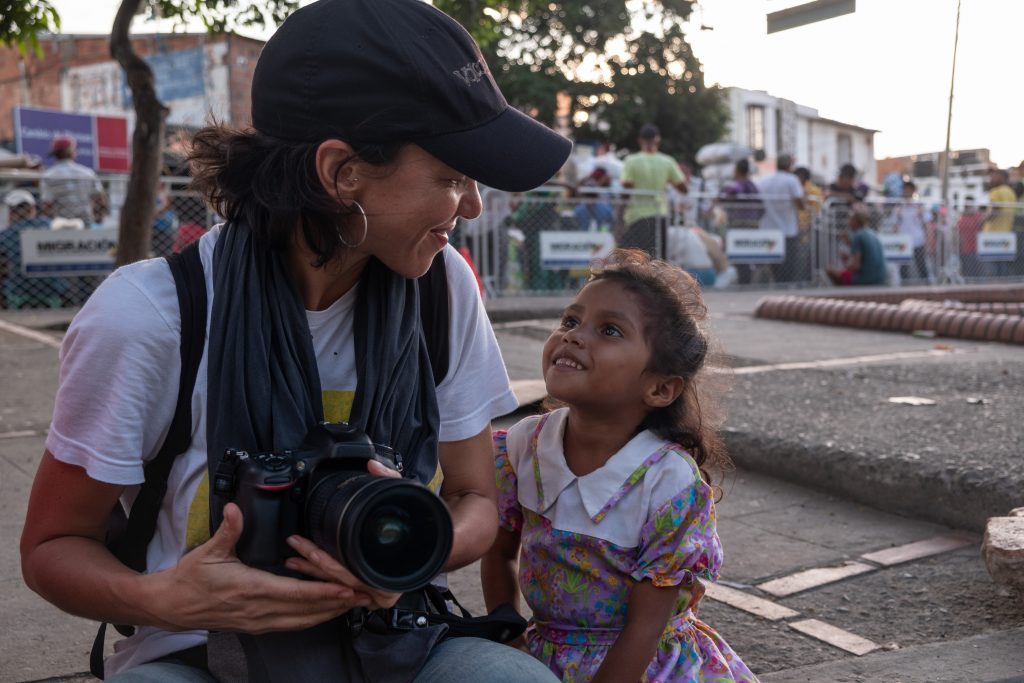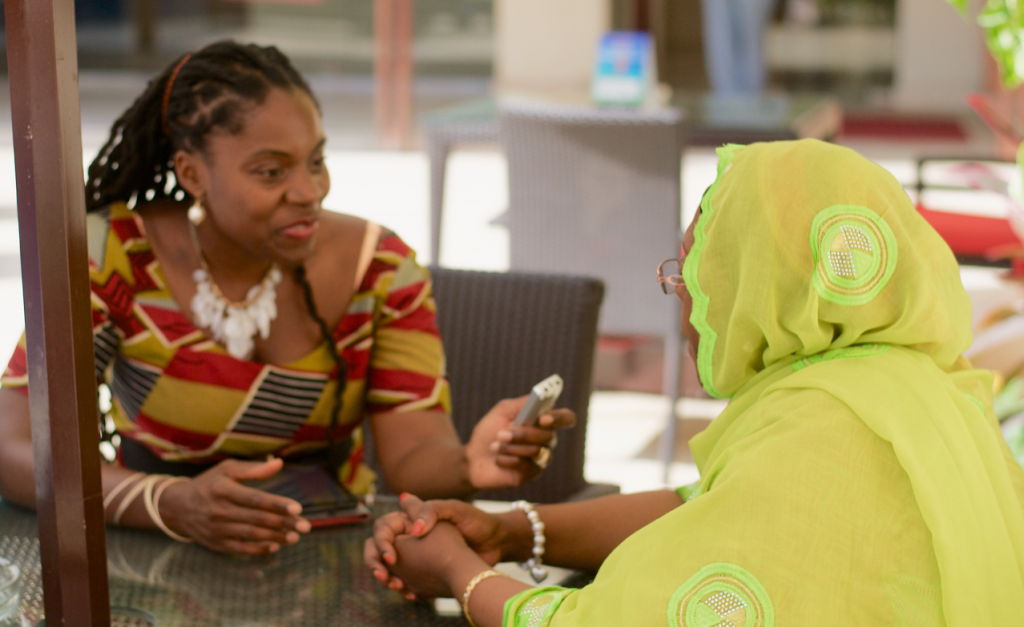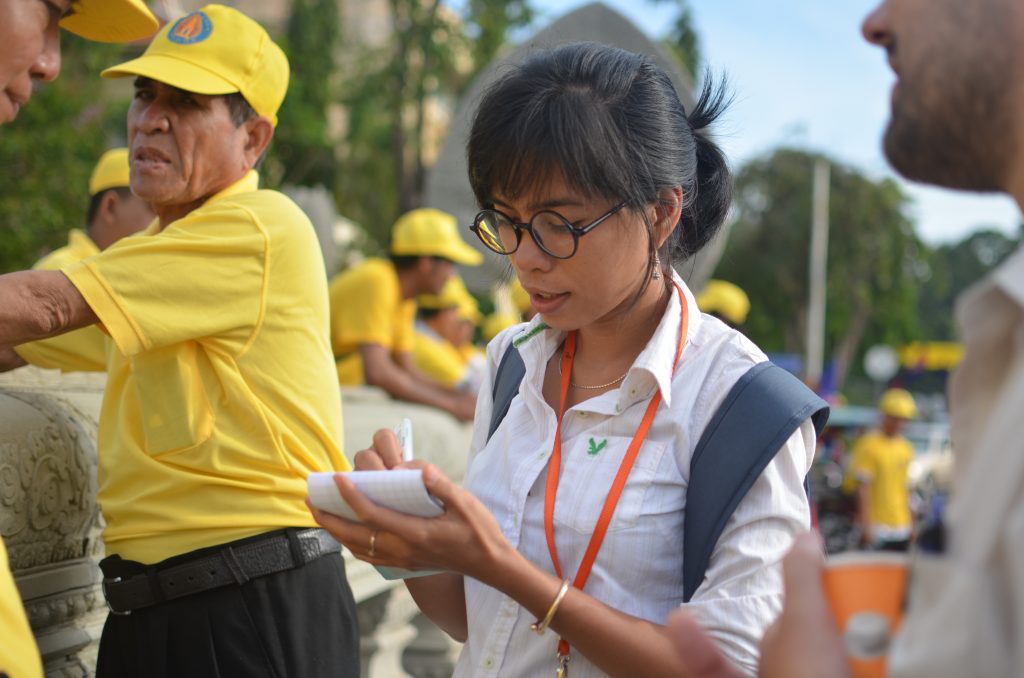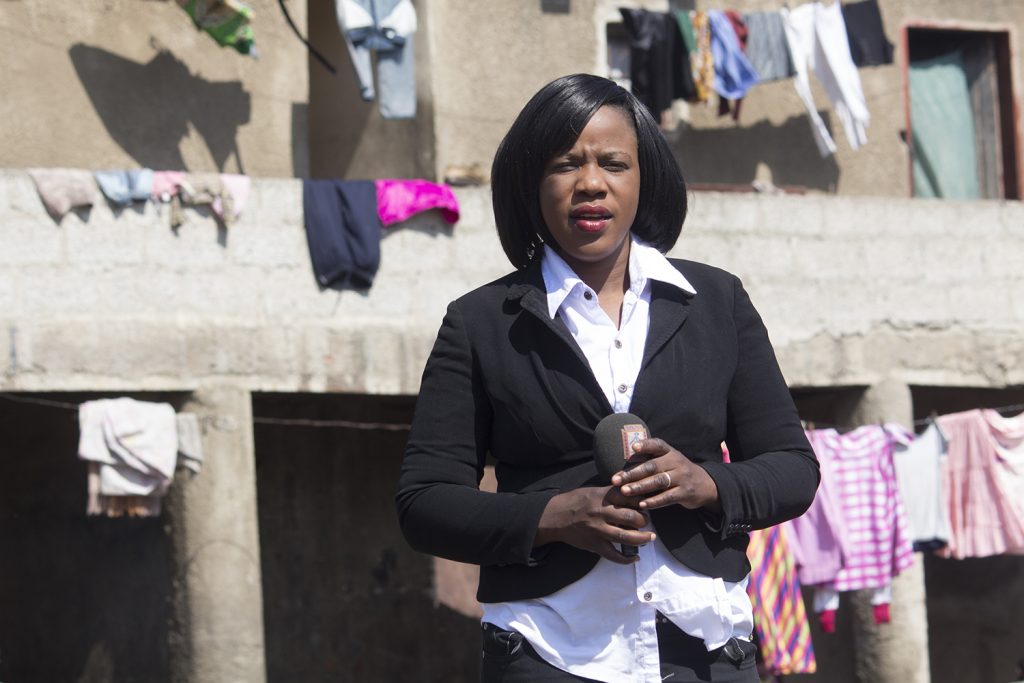We rely on journalists to inform the public—yet our work and research over the years has found that women’s voices are drowned out within their own news organizations.

This article was originally published on Evoke. It is reposted here with permission.
Today in America, although women comprise nearly half of all college graduates and enter the work force at the same rate as men, they are leaving sooner and the playing field remains wildly unequal. At the current rate, it will take us generations to achieve gender equity.
The news media can illuminate this global problem, but the narrative is not well told. In 2019, the coverage of gender equality issues constituted less than half a percent of all news coverage in India, the U.K., the U.S., according to a 2020 report, “Missing Perspectives: How Women Are Left Out of the News.” The same study found that over the last few decades, women’s stories are underrepresented in the news compared to men’s, at a ratio of approximately one to five.
Organizations like the International Women’s Media Foundation and The Press Forward work with students, scholars, journalists and news leaders to tackle this problem by supporting women journalists and improving culture within news organizations to be safe, fair and dignified. We rely on journalists to inform the public—yet our work and research over the years has found, substantially backed by data, that women’s voices are drowned out within their own news organizations.
Despite being two-thirds of journalism students, leadership in the U.S. press is composed of only 28 percent women. Our research finds that women drop off at every level in the pipeline to leadership because they’re harassed, paid less, face inequality at home and are denied opportunities for advancement or prestigious assignments.
These numbers are even more discouraging for women of color, who represent less than 8 percent of U.S. print newsroom staff, 12.6 percent of local TV news staff and roughly 6 percent of local radio staff; only 2.62 percent of all journalists are Black women, according to the Women’s Media Center.

Challenging a narrative that devalues women’s participation in the work force and in our communities will only be possible if we ensure the press exhibits the inclusiveness that it demands of other industries. And to address gender inequity, we need to change the industry itself in meaningful and permanent ways.
It matters who decides what is news, whose voices we hear, and whose stories get told. When women are seen, and highlighted in a manner that accurately reflects their role in society, it changes public perceptions. To date, the people at the top of the news media have not reflected this, nor have media writers or critics adequately examined the problem within their own house.
COVID-19 Brings a Once-in-Century Moment for Women
This issue is more important than ever, as the pandemic disproportionately affects women. Nearly one out of four are considering scaling back their careers or leaving the work force altogether because of the unforeseen consequences of COVID-19, including caregiving, according to research from McKinsey and LeanIn.org. As of February 2021, women have lost 5.4 million jobs, while men lost 4 million.
COVID-19 also ripped at the seams the vulnerable caregiving infrastructure that keeps working mothers in the work force. Mandated shelter-in-place orders closed schools and daycare around the country, forcing working parents—particularly mothers, who tend to be primary caregivers—to keep kids at home, making it even harder for them to work. And despite the fact that women outnumber men in the work force, women do almost twice as much unpaid household and care work than their male partners. Economists agree that without equality at home, there will never be equality in the workplace. COVID-19 exacerbated these inequalities.
The reporters who have brought this story to life with care, richness and depth have been women and mothers, who have revealed not only the lives of stressed caregivers, but also a lack of caregiving support that support working mothers—such as affordable child care and preschool. Continued, in-depth narratives (such as The New York Times series “Primal Scream”) that challenge the policies and laws that shape our lives are needed to advance the conversation around keeping mothers in the work force. Many women reporters are living the story in real time.
Yet across the globe, women’s voices are not being included in coverage of the pandemic, even though they are the most vulnerable to its impacts. The study, “The Missing Perspectives of Women in COVID-19 News,” found newsgathering and news coverage of the pandemic were biased towards men’s perspectives. As a result, the report found that “women are at ever-greater risk of being further marginalized amid the most significant global health crisis of our lifetimes.”

A Roadmap to Change
These findings, as well as continued reckonings across newsrooms in America around racial inequality led by employees and unions, reveal much more needs to be done to bring underrepresented voices into newsrooms to reach the communities they cover.
We do see some signs of progress. The revelations from the #MeToo movement helped women advance into leadership, including top roles in media. Prominent examples include Rashida Jones and Susan Zirinsky, the first women to lead their respective networks at MSNBC and CBS News. Additionally, all White House correspondents for the major networks are now women, a traditionally male beat.
But work remains to fix the “broken rung,” or those at the entry or mid-level who leave earlier on in their careers, and represent the biggest source of attrition in news organizations.
None of this can be solved by one news organization alone, but individuals can make an outsized difference. News leaders in a position to affect change must come together to talk about the problem in the industry through shared data and encourage media writers to more frequently examine the issue. Annually, The Press Forward onboards news organizations into the McKinsey & Co. and LeanIn.org “Women in the Workplace” study to examine gender inequality, and then convenes news leaders to collectively examine and talk about the problem through evidence-based solutions and best practices. Our goal, which we know is shared by the many news leaders who work with us, is to ensure women and underrepresented communities are supported, retained, and advanced at the entry and mid-levels.
Yet it’s not enough to push for women’s presence in the press; shifting away from male-dominated cultures that shape global newsrooms and towards inclusive and ethical leadership cultures is necessary to change the way women are portrayed in the news. For those women who have reached top roles, we must ensure they are supported through leadership development. And we need to tell their stories.

When we see women in power and celebrate them for their skills, accomplishments and capabilities—instead of scrutinizing their personality or attire—it changes society’s perceptions of who should lead. It also helps us move towards behavior we can all agree is acceptable in our workplaces —places where all are given a fair shot to rise on their merits.
Additionally, news organizations can do more to track who is receiving high profile assignments, who are featured as protagonists in a story, and also who is considered an authority. Between 2005 and 2015 fewer than one in five experts globally in the news were women, for example. Self-auditing, or tracking, who gets assigned which stories and who reporters turn to as sources can be revelatory and spark reflection, and change behavior within newsrooms. Bloomberg’s New Voices program and the BBC’s 50:50 project are important examples.
Ultimately, those with power in the industry must use their voices for those with less power. That is the mission of journalism, after all: to elevate underrepresented voices and to hold the powerful to account. That means being willing to look inward towards our own industry’s failings and commit to new ways of working.
This isn’t merely a moral argument; when lived experiences of the public are represented in media organizations, the journalism is better. New Yorker writer Jiayang Fan’s first-person account, “The Atlanta Shooting and the Dehumanizing of Asian Women,” is a poignant and timely example.
Healthy newsrooms mean healthy democracies, and we need equity in the news media to achieve both.
You may also like:





